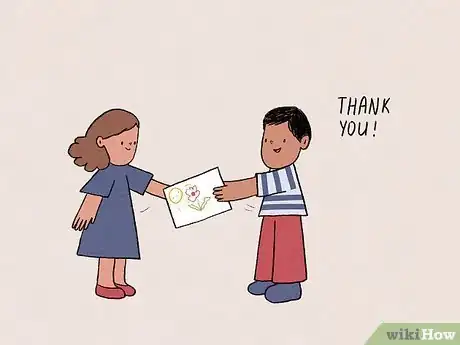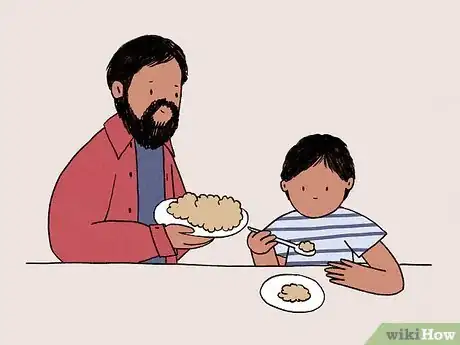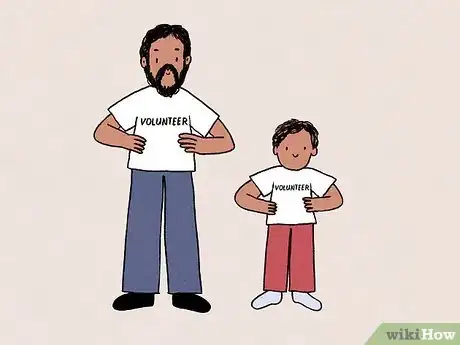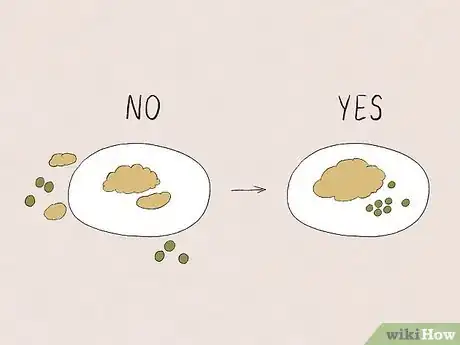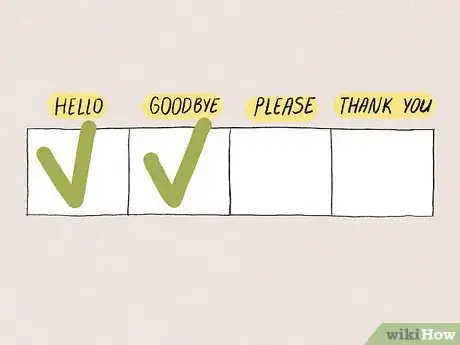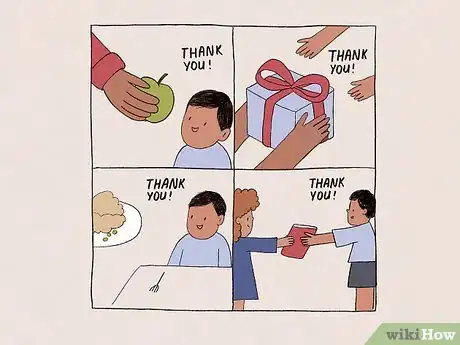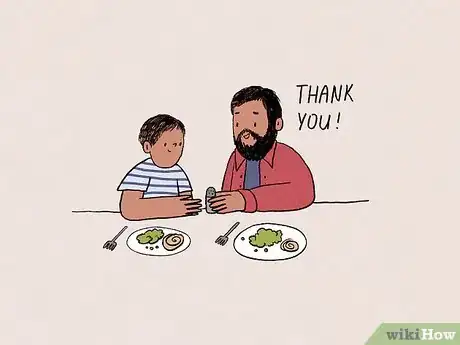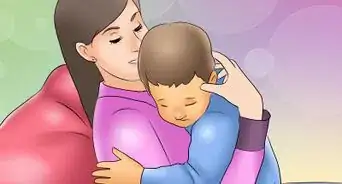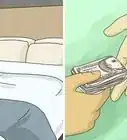This article was co-authored by Jade Giffin, MA, LCAT, ATR-BC and by wikiHow staff writer, Madeleine Criglow. Jade Giffin is an Art Psychotherapist based in New York, New York. She brings over a decade of experience specializing in the treatment of trauma and grief, pre and post-partum and parenting challenges, anxiety and stress management, self-care, and social, emotional, and learning difficulties for adults, teenagers, and children. Jade holds a BA in Psychology and Visual Arts from Barnard College and an MA in Art Therapy from New York University with distinction. She is a Hughes Fellow and Lehman Award recipient for providing outstanding clinical work. Jade's roles also encompass clinical supervisor, therapeutic program developer, published researcher, and presenter.
There are 7 references cited in this article, which can be found at the bottom of the page.
This article has been viewed 201,999 times.
Teaching manners to a young child may seem a little overwhelming, but it doesn’t have to be. You can encourage your child to be polite by teaching them a few key phrases and greetings, encouraging them to understand the importance of empathy and compassion, and modeling good behavior so that they have a good example to look up to! This article explores these methods and more so that you can help your child learn the importance of good manners and etiquette.
Steps
Expert Q&A
-
QuestionWhat do I do if my child is a bully?
 Jade Giffin, MA, LCAT, ATR-BCJade Giffin is an Art Psychotherapist based in New York, New York. She brings over a decade of experience specializing in the treatment of trauma and grief, pre and post-partum and parenting challenges, anxiety and stress management, self-care, and social, emotional, and learning difficulties for adults, teenagers, and children. Jade holds a BA in Psychology and Visual Arts from Barnard College and an MA in Art Therapy from New York University with distinction. She is a Hughes Fellow and Lehman Award recipient for providing outstanding clinical work. Jade's roles also encompass clinical supervisor, therapeutic program developer, published researcher, and presenter.
Jade Giffin, MA, LCAT, ATR-BCJade Giffin is an Art Psychotherapist based in New York, New York. She brings over a decade of experience specializing in the treatment of trauma and grief, pre and post-partum and parenting challenges, anxiety and stress management, self-care, and social, emotional, and learning difficulties for adults, teenagers, and children. Jade holds a BA in Psychology and Visual Arts from Barnard College and an MA in Art Therapy from New York University with distinction. She is a Hughes Fellow and Lehman Award recipient for providing outstanding clinical work. Jade's roles also encompass clinical supervisor, therapeutic program developer, published researcher, and presenter.
Art Psychotherapist First, really check in with your own feelings—you might be sad, wonder what's wrong with your child, or feel like you did something wrong. Then, put a plan into place—talk to the school counselor or a teacher you trust to find out what really happened, and have an open, honest conversation with your child about it. Also, remember—this doesn't have to be who they are; it's something they did, and their behavior is sending a message.
First, really check in with your own feelings—you might be sad, wonder what's wrong with your child, or feel like you did something wrong. Then, put a plan into place—talk to the school counselor or a teacher you trust to find out what really happened, and have an open, honest conversation with your child about it. Also, remember—this doesn't have to be who they are; it's something they did, and their behavior is sending a message. -
QuestionWhy do kids run away when they're mad?
 Community AnswerDepending on a child's age, they may not know how to handle their emotions. Anger is an overwhelming feeling and running away just happens to be their way of dealing with it.
Community AnswerDepending on a child's age, they may not know how to handle their emotions. Anger is an overwhelming feeling and running away just happens to be their way of dealing with it. -
QuestionHow should I act when my younger sibling is bossing me around?
 Community AnswerTry to understand each other, talk to each other more nicely, give hugs to each other more often, show more affection and maybe you would start to see each other more equally.
Community AnswerTry to understand each other, talk to each other more nicely, give hugs to each other more often, show more affection and maybe you would start to see each other more equally.
References
- ↑ https://www.parents.com/kids/responsibility/manners/teaching-manners-kids/
- ↑ https://www.parents.com/kids/responsibility/manners/teaching-manners-kids/
- ↑ https://www.parents.com/kids/responsibility/manners/teaching-manners-kids/
- ↑ https://www.parents.com/kids/responsibility/manners/teaching-manners-kids/
- ↑ https://www.parenting.com/toddler/ask-dr-sears-table-manners-for-toddlers/
- ↑ https://www.parents.com/kids/responsibility/manners/teaching-manners-kids/
- ↑ https://www.parents.com/toddlers-preschoolers/discipline/how-do-i-teach-my-son-not-to-interrupt-me/
- ↑ https://www.gse.harvard.edu/news/uk/17/02/raising-kind-children
- ↑ https://childmind.org/article/how-discipline-toddlers/


